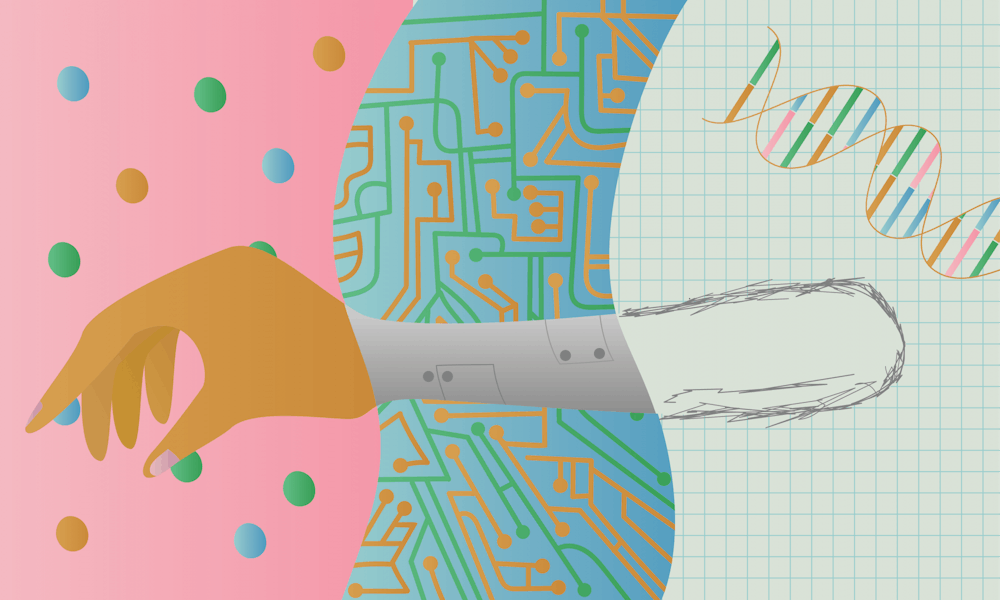'Influencer' has become one of those terms that through overuse has now become meaningless. It manages to simultaneously be an aspiration and an insult, the future of marketing and the bane of many small business owners' existences. Influencer is the term we use to describe TikTokers with a decent social media following as well as mega–celebrities and well–dressed pets. It’s even how the Pope describes the Virgin Mary.
To many, the very concept of influencing is fake or contrived, with candid content that in actuality is meticulously planned and orchestrated to appear relatable. As a result, it can be difficult for all social media users to grapple with what is real versus what is fake. Social media apps like Instagram are centered around images, and there are clear ideas about what we are supposed to look like or what our feeds should look like—there is a lot of pressure to stick to an aesthetic. We know what we see on social media is not “real,” but the pressure we feel to present our best selves is undeniably real.
It doesn’t get any less real than artificial influencers. Meet Lil Miquela, or Miquela Sousa, a CGI influencer with 2.9 million followers on Instagram. She’s the personification of Instagram Face and Instagram culture except for the fact that she’s not a person—Miquela is a digital influencer created using motion graphics. In the last few years, Instagram has seen the emergence of a new breed of influencer—one whose appearance, agency, and voice lie in the hands of large corporations who remain mostly anonymous to their human followers. Though their presence on social media is relatively new, these accounts have the potential to change digital marketing and also pose some concerns when it comes to the real world.
Typically, human influencers set an uncannily uniform and unrealistic standard of beauty. CGI influencers—models created for the sole purpose of gaining a following—take this to the next extreme. CGI influencers like Miquela and Shudu Gram have been featured in beauty campaigns for brands such as Fenty Beauty and Pat McGrath. They always look perfect, never a hair out of place or a blemish on their skin. These influencers will never age, never take a picture from a bad angle, and never even have a bad hair day. CGI and artificial intelligence are literally setting the beauty standards of our future.
Even though their existences are fake, the influence and money that the accounts like Lil Miquela produce are real. Miquela has worked with some of the biggest brands in the world including Prada and Samsung, and even made out with Bella Hadid in a bizarre Calvin Klein advertisement. She was also dubbed one of the 25 most influential people on the internet by Time Magazine in 2018 and reportedly earned almost $12 million in 2020.
The success of digital influencers thus far is understandable. Not only are brands attracted to the novel like moths to a flame, but virtual influencers are controllable and pose way less risk than human influencers—Miquela doesn’t have any old racist tweets to be canceled over. Along with these advantages, research has revealed that digital influencers command three times more engagement than your run–of–the–mill human influencer.
This brings forth the question: What is the future of the influencer industry? Many investors believe that digital and AI influencers are the future, and their goal is to have these influencers across every platform—not just Instagram, but YouTube, TikTok, and Snapchat. Many of us used to believe that performers and artists were safe from the threat of automation, but this is obviously not the case.
Every campaign or sponsorship a digital influencer is hired for is directly taking that opportunity and paycheck from real, human creators. This is especially problematic when it comes to those in marginalized groups who already might not have as many opportunities. CGI influencers are being used for diversity to represent the BIPOC and LGBTQ communities instead of real people who embody these identities.
The future of influencing and CGI influencers is murky. But one thing that the whole digital influencing movement confirms to us is that what we see on social media is literally not real. Digital and CGI influencers already exist and we cannot stop the movement, but what we can do is think critically about what we see as we scroll.







